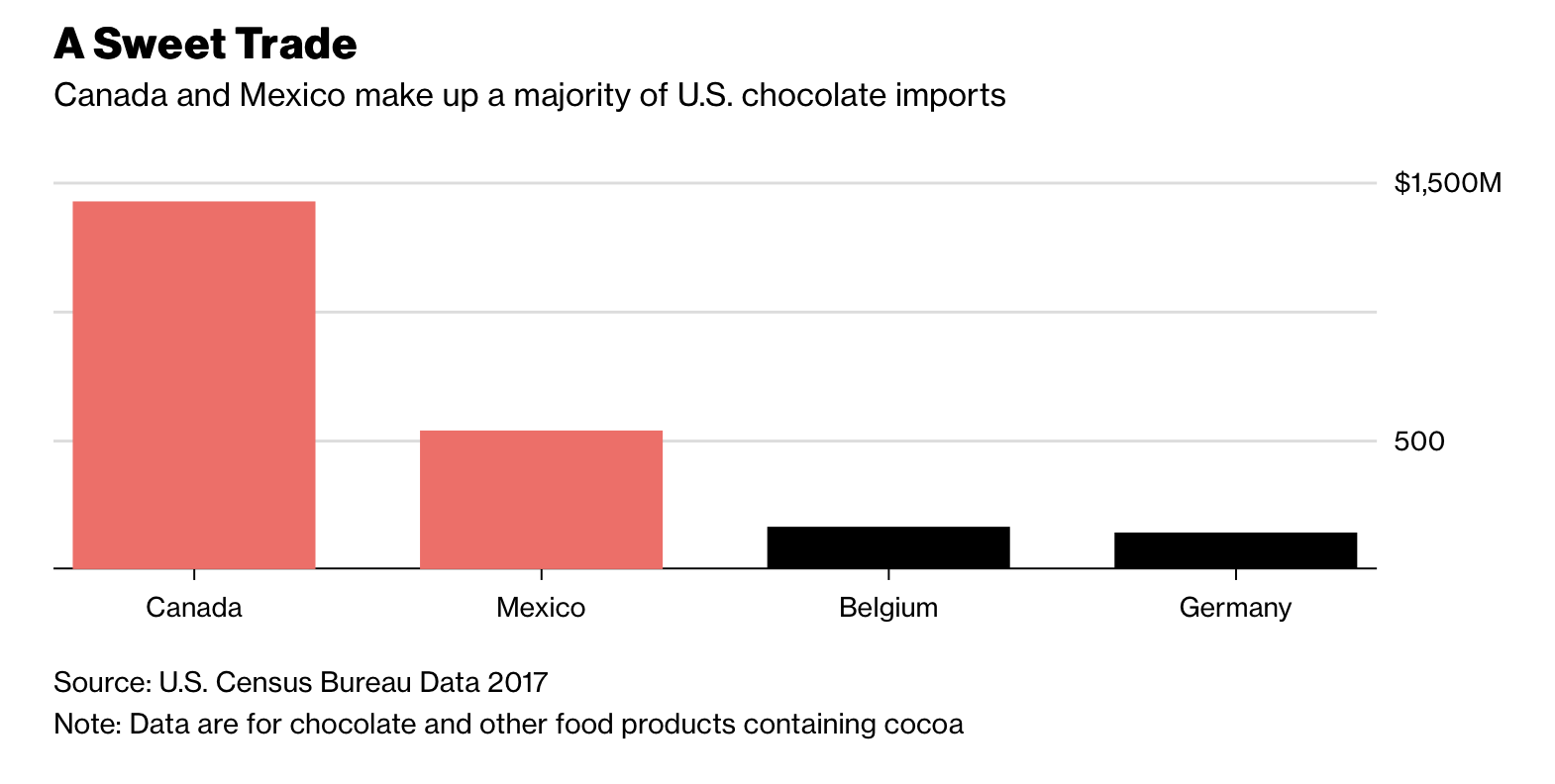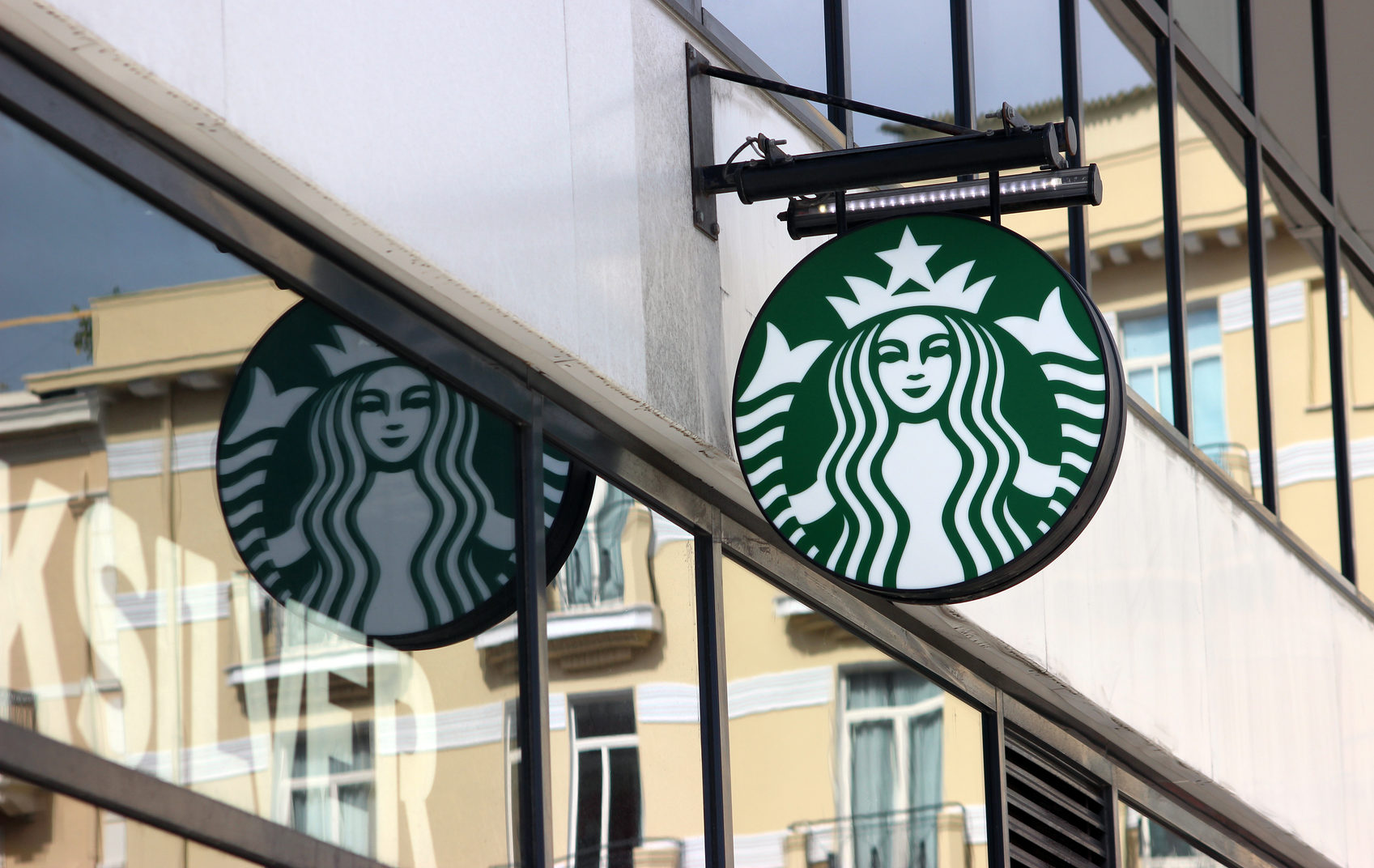Published 16 February 2018
North America has a sweet relationship -- we are each other's largest trading partners in chocolate. In a sign of mutual affection, our NAFTA neighbors to the north and south supplied us with three-quarters of the chocolate we imported last year.
A Love Affair to Last Three Millennia
Around 3,000 years ago in the Yucatán Peninsula of modern Mexico, the Mayans got an idea – a deliciously brilliant idea. They cultivated cacao, an innovation that still brings pleasure to the world on a daily basis.
The chocolate drink they created, called xocolatl, meaning “bitter water,” was made from ground cacao beans boiled in water and flavored with chile, vanilla, and other spices (we can also thank Mexico for the vanilla and chili peppers).
Cacao Was the Currency of Mesoamerican Trade
The Mayans and Aztecs experienced the seemingly magical mind-sharpening, mood-boosting, medicinal, aphrodisiac powers of chocolate that sustain our chocolate obsession today. Cacao was so highly valued a commodity that it could be exchanged in Mesoamerican marketplaces for other goods – food, animals, clothes, servants, or services. After the Aztecs conquered the Mayans, they required them to pay cacao as tribute so the elite Aztec rulers would have access to a steady supply. Demand for cacao underlay the creation of trade routes.
Food of the Gods
The cacao tree is native to the Americas, thought to be a gift from Quetzalcoatl, the god of wisdom. After the Spanish conquered the Aztec Empire, they brought home cacao and introduced hot chocolate to Europe. It was the Europeans who brought sugary sweetness to the drink, popularized it, and in so doing helped spread the global craving for cacao.
They transplanted cacao trees to other tropical climates. Today, more than 80 percent of cacao grown worldwide comes to us from Africa or Southeast Asia. The top four producers are the Ivory Coast, Nigeria, Ghana, and Indonesia. Mexico only exports around two percent of the cacao traded globally.
From Cacao Comes Chocolate
The United States imported around $1.3 billion worth of cacao last year, 63 percent of it from the Ivory Coast. Ghana, Ecuador, the Dominican Republic, and Nigeria round out the top five sources, together accounting for 95 percent of U.S. imports of cacao.
From cacao comes chocolate. Americans eat a lot of it, make a lot of it, and sell a lot of it to the rest of the world. Chocolate sales account for more than 60 percent of the $34.5 billion confectionary industry in the United States. The United States is the world’s second-largest exporter of chocolate candy, behind the European Union.
But we like our variety as consumers so we also import chocolate. The United States, Russia, Canada, the European Union, and Mexico have the biggest sweet tooth as the top five importers of chocolate in the world, collectively consuming around half of global imports.

From Bloomberg.com article, Nafta Breakup Would Leave a Bitter Taste on Valentine’s Day
North America Has a Sweet Relationship
Canada and Mexico are the main customers for American-made chocolate. In a sign of mutual affection, our NAFTA neighbors to the north and south supplied us with three-quarters of the chocolate we imported last year. Canada shipped over $1.4 billion worth and Mexico sold us another $538 million.
Belgium and Germany are a distant third and fourth as exporters of chocolate to the United States. European chocolatiers can ship 107 million tons at a reduced tariff of around 8 percent, but after that, the tariff climbs to a steep 43 percent tariff.
Bloomberg reports that American makers Hershey and Mars maintain North American production, taking advantage of tariff elimination under the NAFTA. Before chocolate became tariff-free, we would have paid a 20 percent premium on North American chocolate. Not only did Mexico give the world chocolate, we can now buy it duty free.
Share our infographic.

© The Hinrich Foundation. See our website Terms and Conditions for our copyright and reprint policy. All statements of fact and the views, conclusions and recommendations expressed in this publication are the sole responsibility of the author(s).






